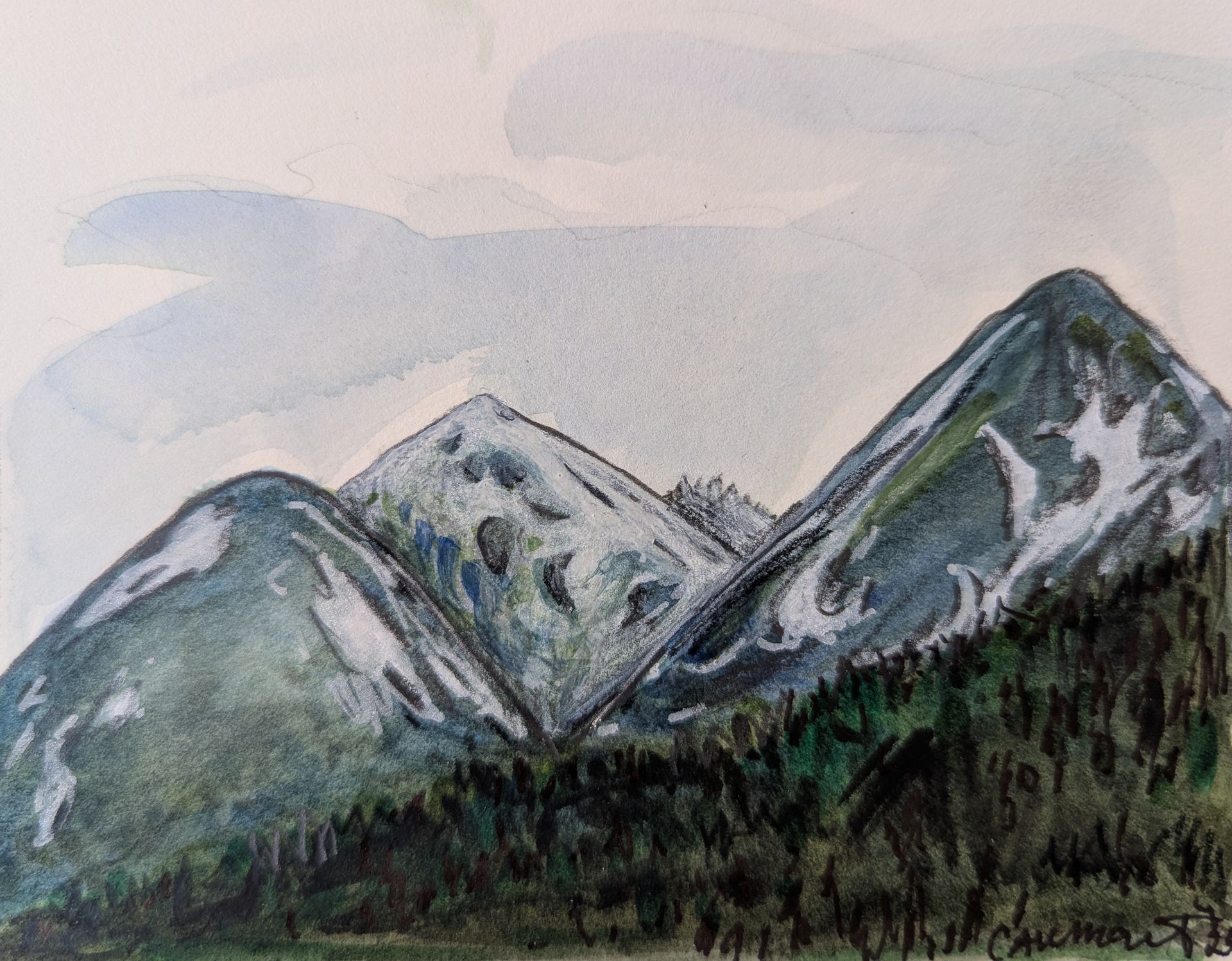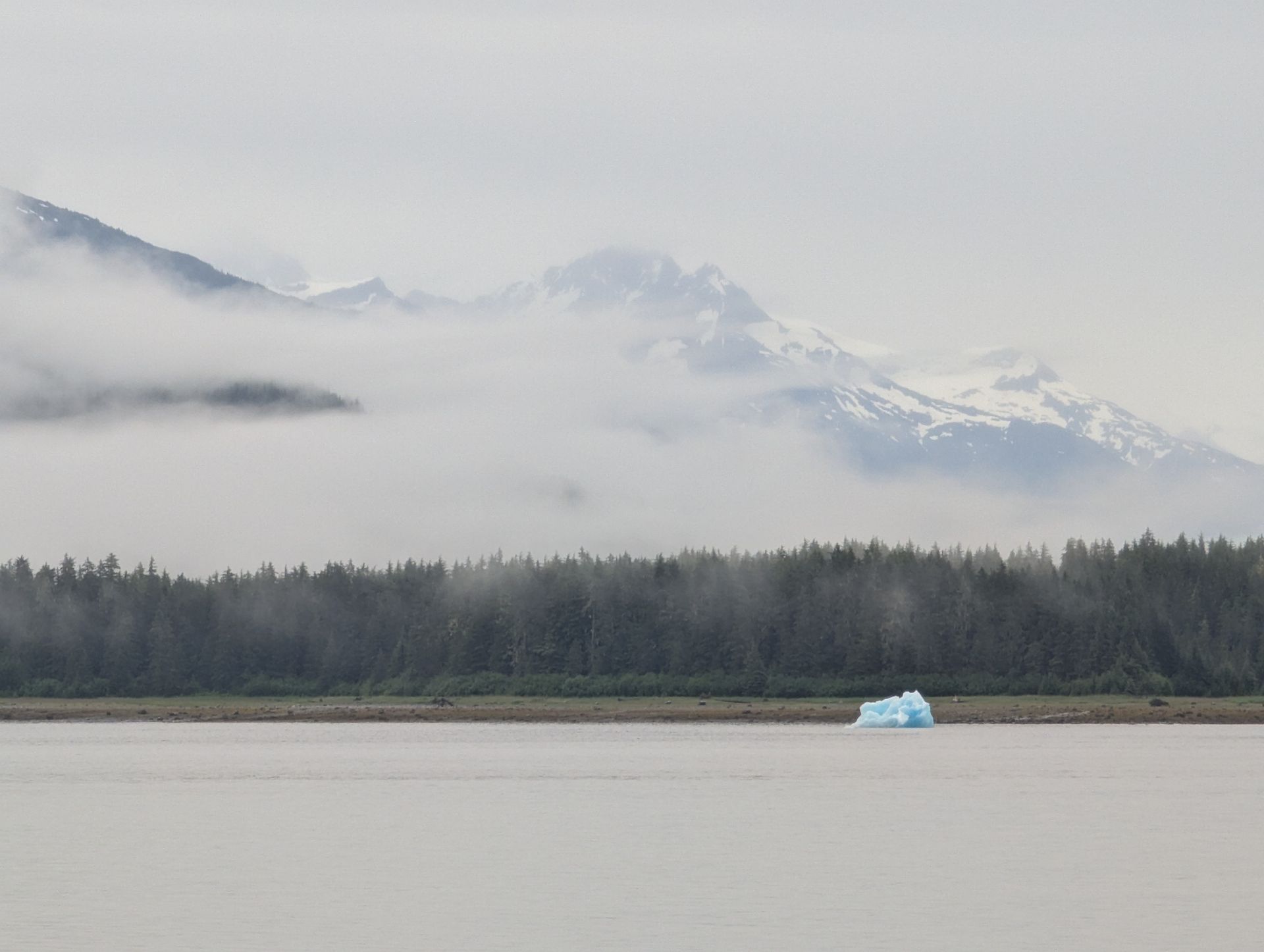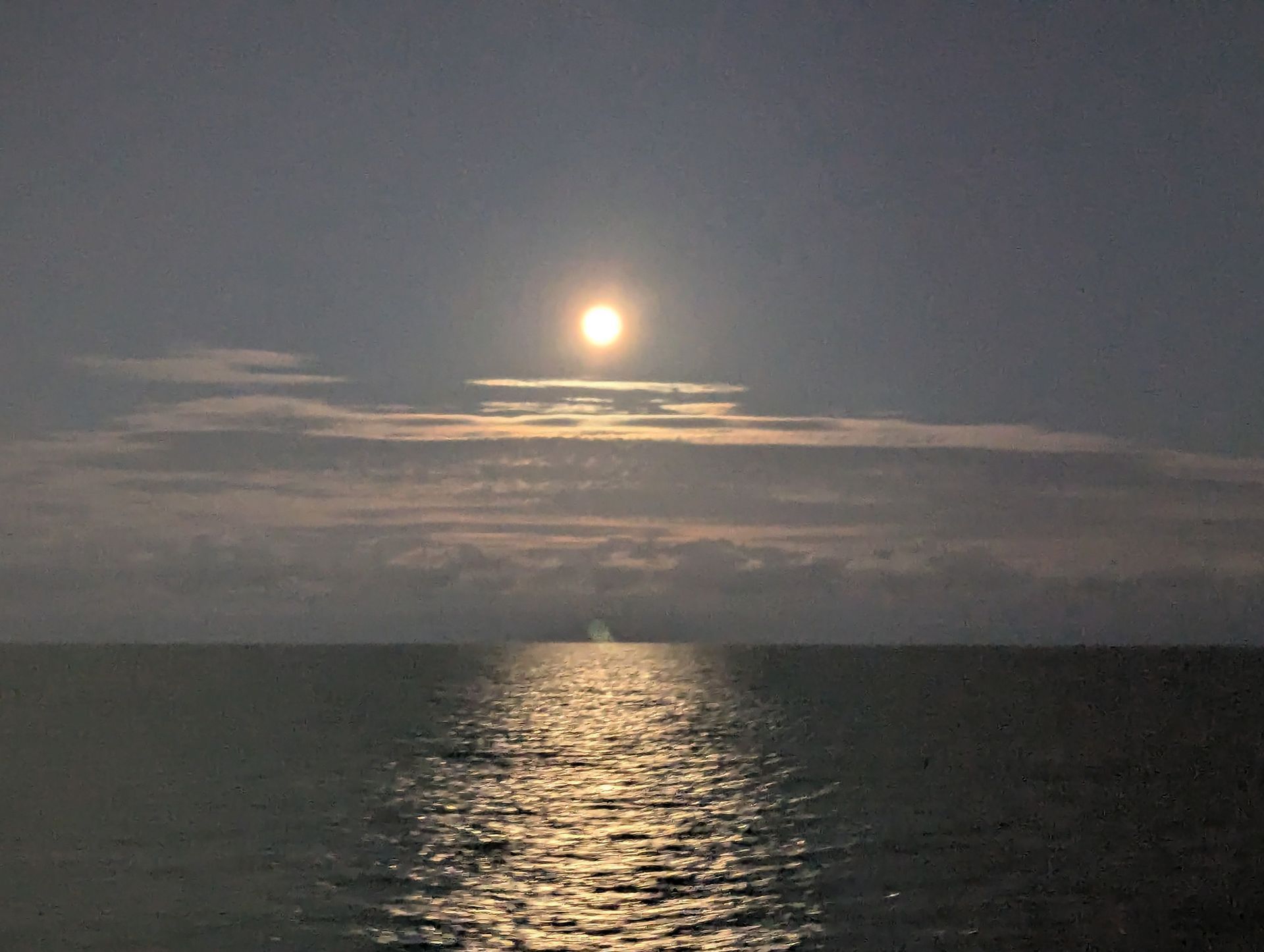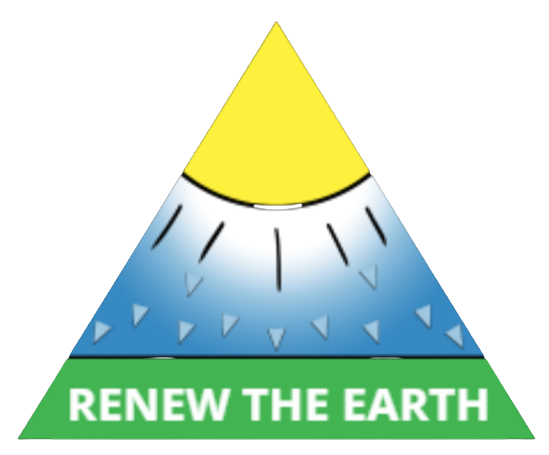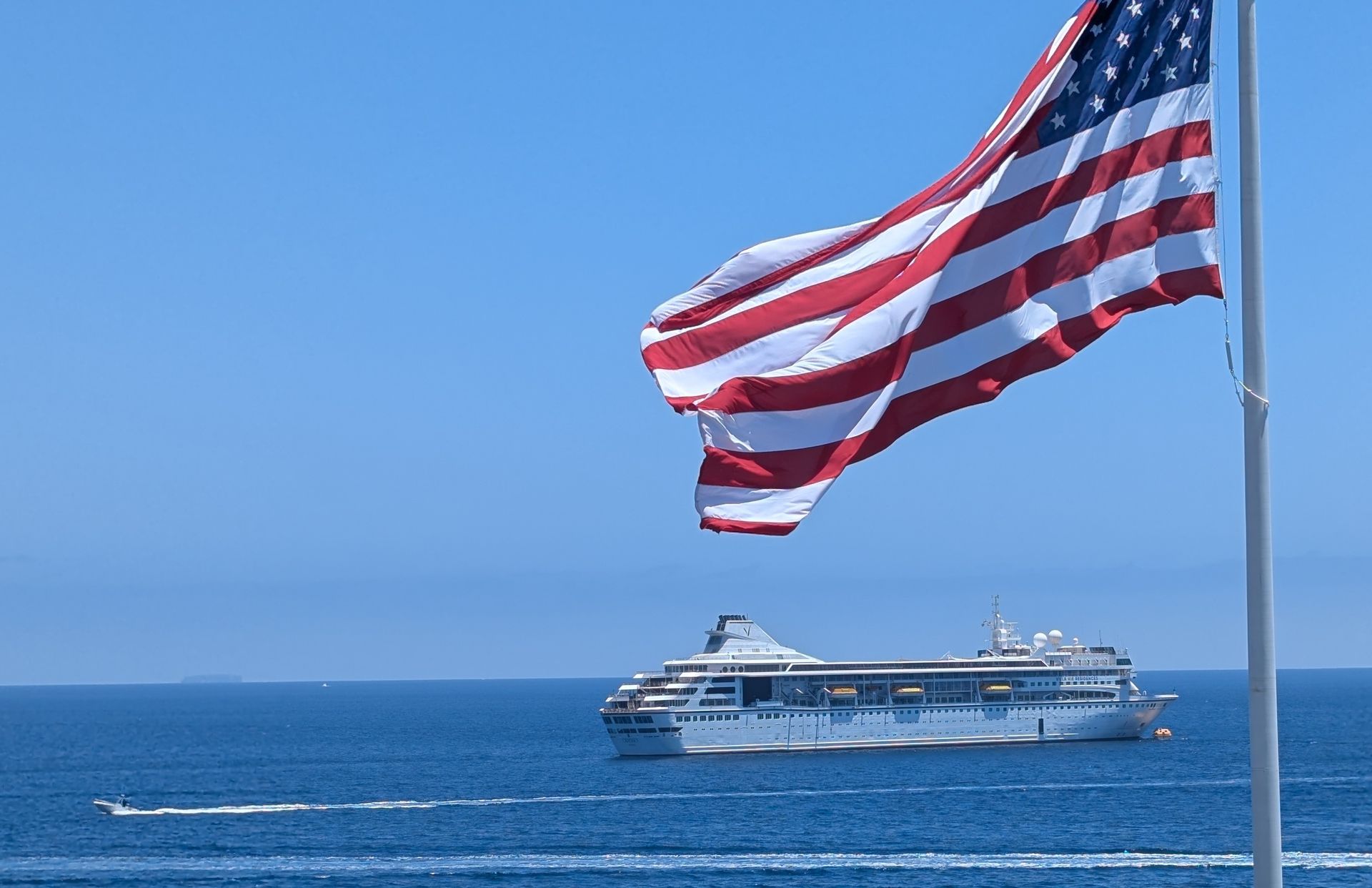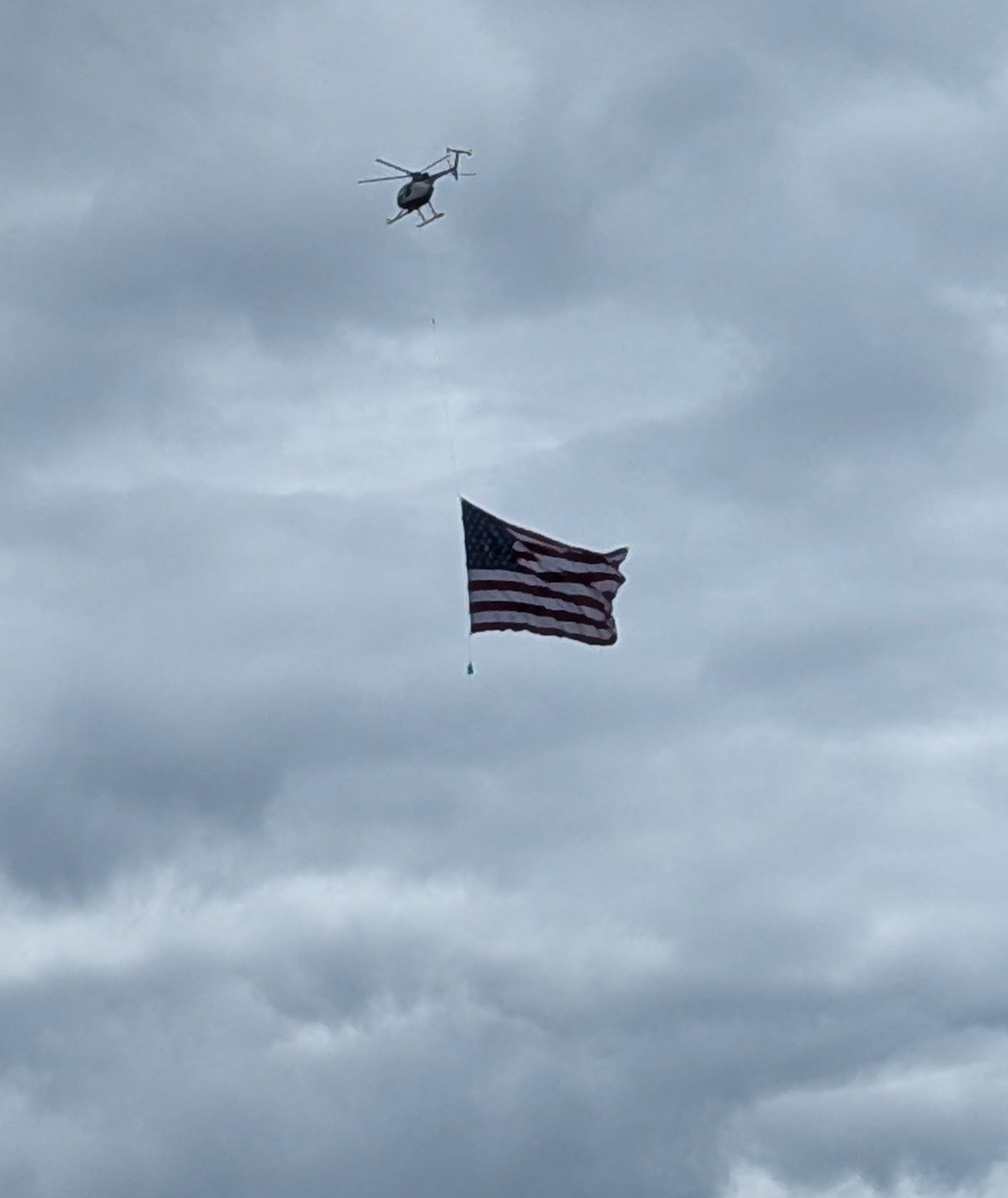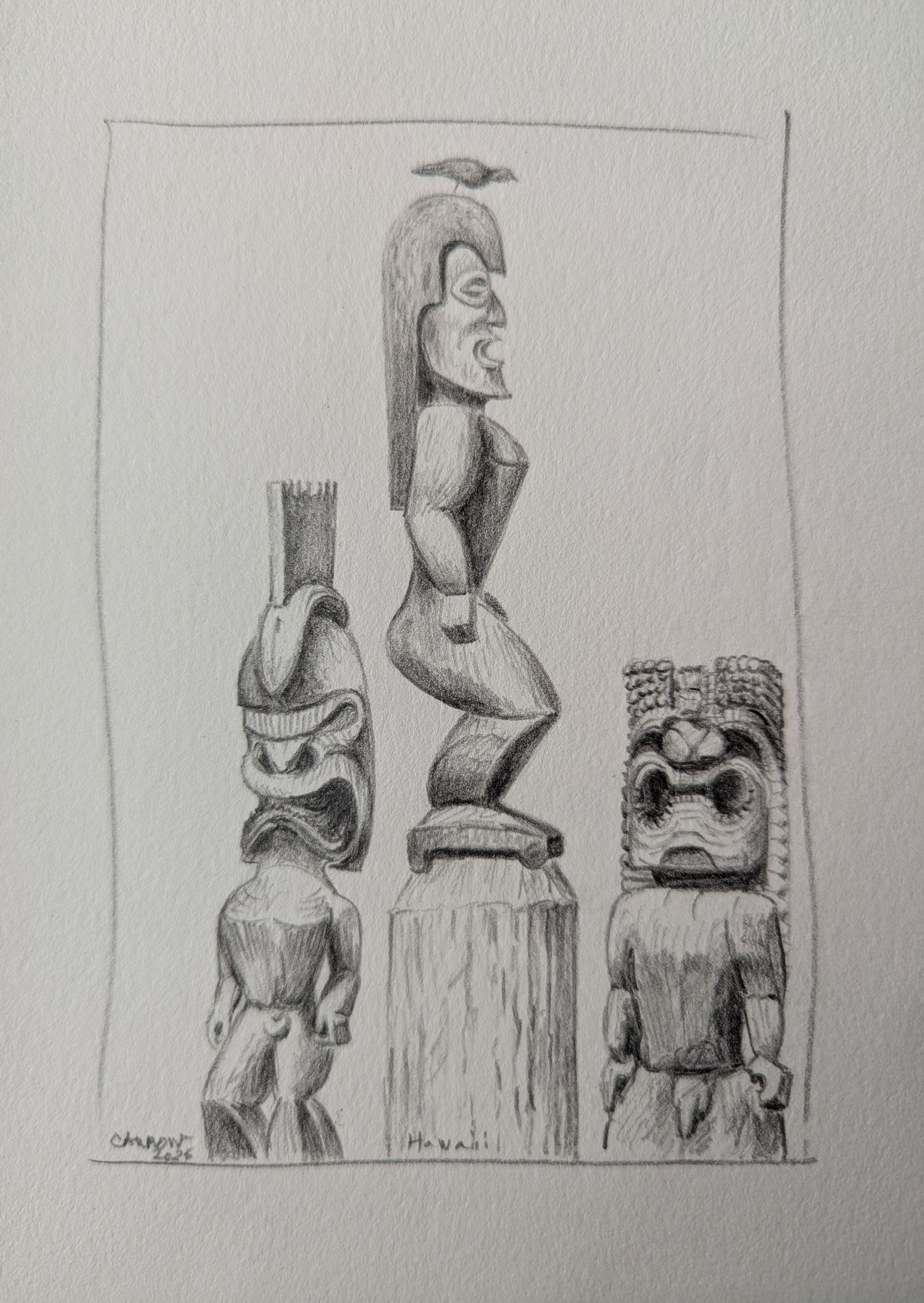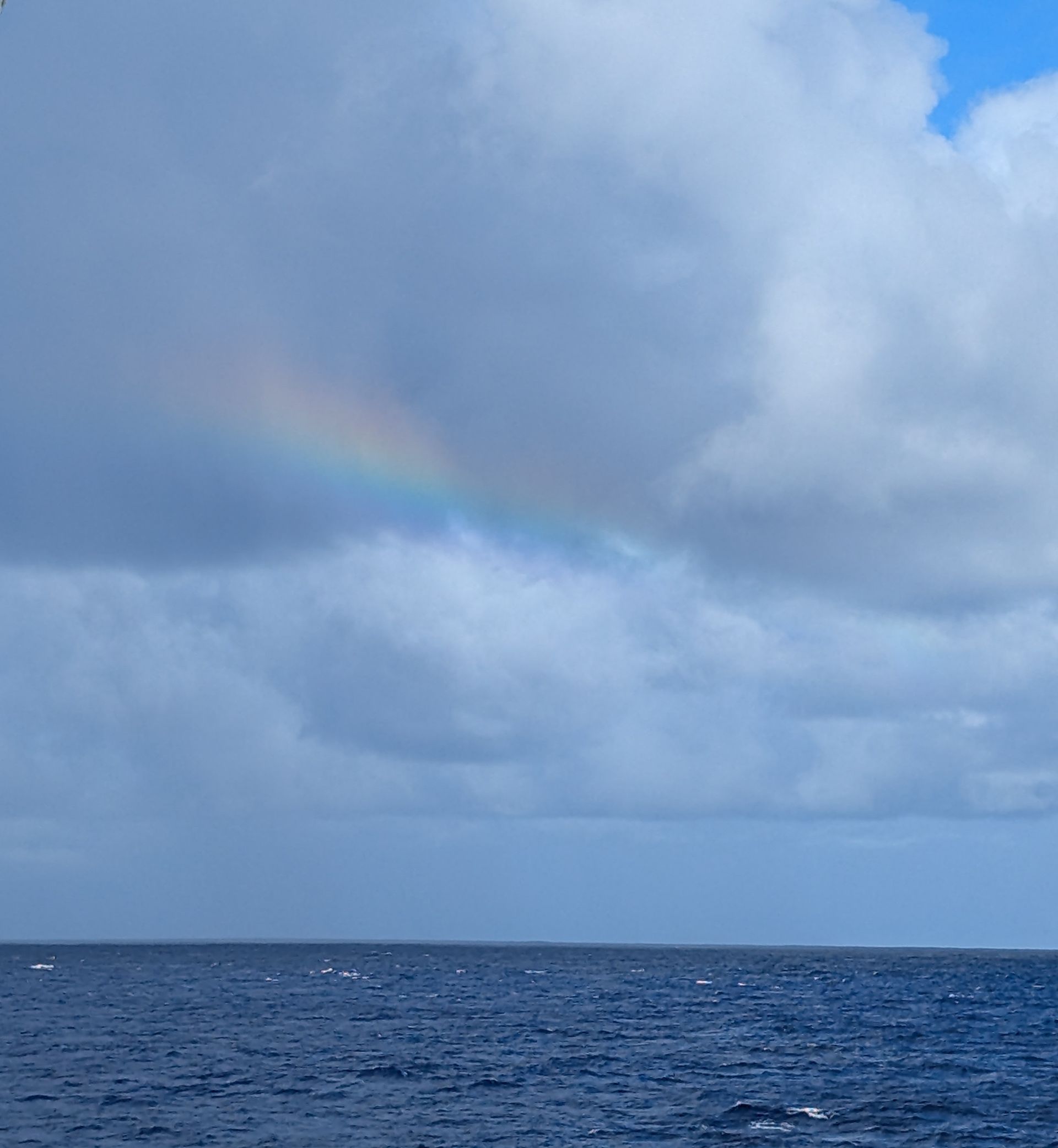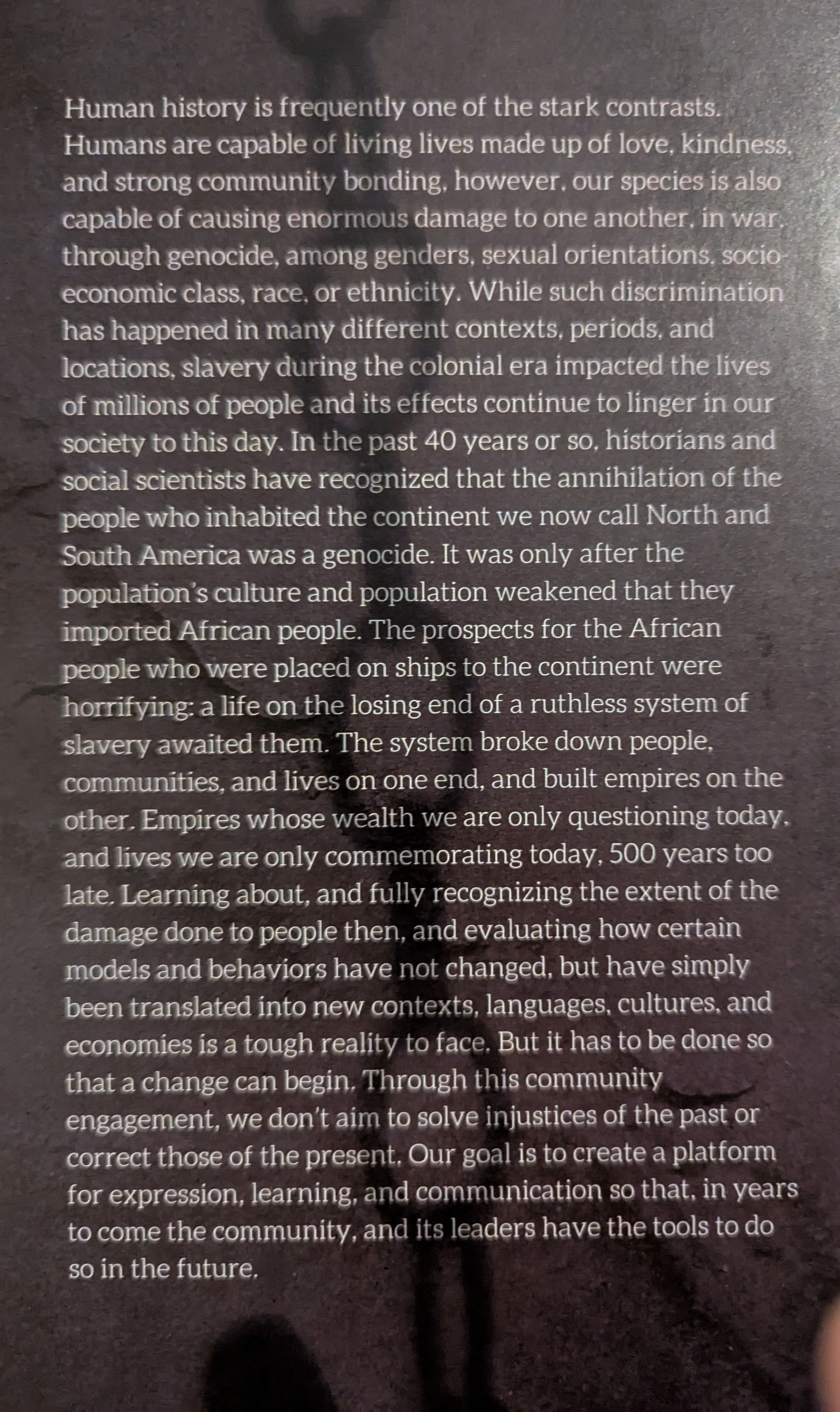Chapter 2: Cruising Around the World
“The path of least resistance.” (The path of the most loot.)
Bonarais 4/13/25
“Island of the giants,” was the name the Spanish gave to Bonarais in the 1400’s because the native people were so tall. The prehistoric people of southwest Florida, the Calusas, were exceptionally tall also. Maybe the earliest sailing explorers?
We are watching as they are unloading a container ship on the finger dock near where we are tied on. Four people halt its sway as it dangles from a crane and approaches the ground. A flatbed truck is already there, the container is placed and driven away. Repeat, repeat, again, again. An island has to import most of its needs.
Bonarais is like a village of beautiful doll houses. The Dutch who were historically of colonial dominance, after they drove the Spanish out, and still maintain significant influence, designed the buildings with color and form that reminds them of their homeland. Pastel orange, yellow, and turquoise structures with contrasting gingerbread eves, cafe's where locals sit outside with coffee and converse in Dutch. The children eat ice cream. Very civilized, unhurried, no garbage.

While it is cold in the Netherlands many Dutch nationals stay here untill the weather improves. They accept dollars and the prices are the same as in the US. $800,000 to buy a 3 BR apartment, 3,000 to rent a vacation place for a week, and to buy a condo, (the Dutch are tastefully building them all along the coast), one million five hundred thousand dollars and they are selling them to Americans. Beautiful beaches, snorkeling, and perfect sailing conditions are the main attractions.
Suddenly while you gaze out at the turquoise water, red and yellow flippers poke from the surface and you realize there are people underneath there snorkeling. Peering into the water from above you can see blue and green parrot fish and other fantastically decorated fish.
When we return to our ship three hours later they are still unloading the containers. They have removed about half and there is another container ship in the distance waiting to approach.
In the interim we had hired a taxi with another couple. We saw the salt flats, the donkeys, the flamingos and the slave houses. The couple we were with are the only people who have shown sincere interest in the Parallel Currency. Jeff has spoken to maybe 15 people on the ship so far. Not an unusual percentage.
The slave houses, no longer in use, are a shockingly cruel structure. Two to four people in a 5 foot by 5 foot coral block structure with a roof. The door is only big enough to crawl through. Resembles a dog house. No trees to shelter from the heat. Only the relief of a sea breeze in the evening. In the day they would have been like ovens. This was where the slaves who worked the salt flats stayed during their 6 day work week. Saturday they walked into town to get their rations and see their families. They walked back to the salt flats Sunday morning to work the rest of the day.
The Dutch East India Company got into the slave trade in the 1600’s. Salt was in great demand as a preservative. The slaves who worked the salt flats named it the “white hell.” Slavery was not abolished by the Dutch until the late 1800’s. Then they brought 'indentured servants’ from India.
Huge flocks of flamingos share the salt flats with Cargil, Inc.? who now owns the salt industry and most of the south end of the island. The birds spend their entire lives walking about in the shallow pools, eating, nesting, socializing, and sleeping. We could see the dark mounds of their nests in the distance. They lay one egg and nurture that “only chick” to maturity.
The salt is harvested mechanically now. The shallow saltwater pools ripen in the heat for 6 months or more, until they turn a lovely pink, like the flamingos. Then the water is drained off, the chunks of salt are ground and flow from the machine like through an hourglass, to form a pure white pyramid of salt below. (Pink salt turn white?
What can I say about the donkeys? So gentle and their sad brown eyes have seen everything. But they don't speak.
At sea.
Curacao 4/15/25
This Dutch colony acquired its independence but still maintains the feel of their presence. Historically it was the main Dutch slave transshipment center.
The current population is multilingual. They speak Dutch, English, Spanish and Papiamento. A local man, Nathan, was very helpful with information.
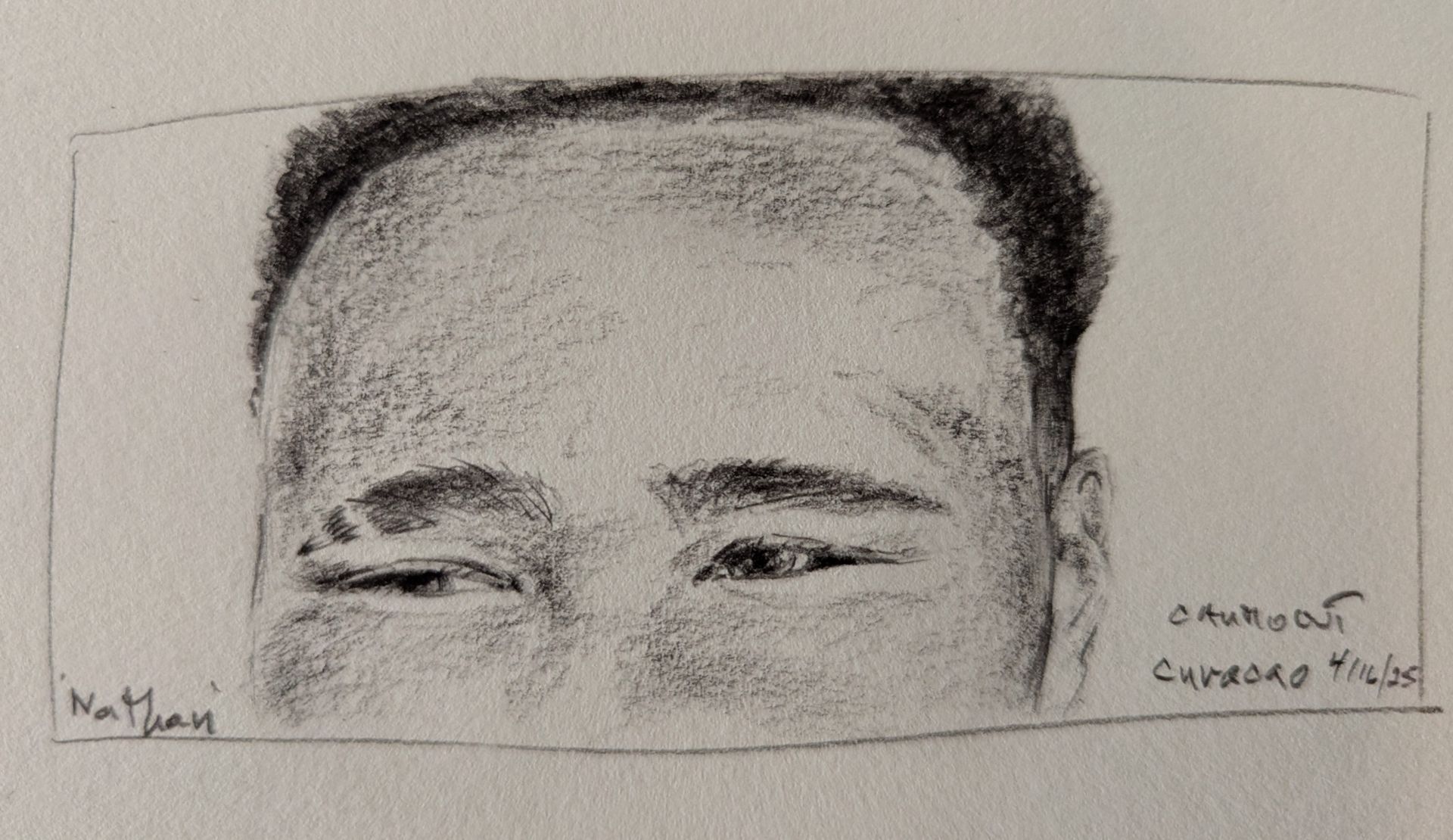
Papiamento is the native language developed during the 17th and 18th centuries within the multi ethnic community dominated by Africans that had been imported as slaves. They maintained the structure and sound laws of their African dialects and borrowed words from all the other languages, including Amerindian and Portuguese. An incredible act of will and assimilation reflected in this language.
The locals refer to Curacao as “Hoya Presioso”, Precious Rock.
To get an idea of the Trans Atlantic Slave Trade here are some numbers. Conducted from 1444 -1867, 35,000 voyages, 12.5 million enslaved Africans were shipped to Europe and the Americas. Almost 2 million died during the passage. The Spanish, Dutch, English, and French all participated. Slaves were the original “renewable energy” their labor used to build fortunes in sugar and salt.
An historic coral block fort dominates the port entrance. It has been converted to a mall with shops and restaurants. Mostly souvenir shops, and high-end shops dominate as far as you can easily walk. Toward the extreme of that the local life becomes more active and there is an open fruit and vegetable market along the canal with small houseboats where the vendors sleep. A thin fellow thrusts a small plastic bag under your nose. “Pot, you buy?”
The pontoon bridge was built in 1888. It allows container ships and other large boats into the deeper harbor. Built on 15 floating pontoons as a walking bridge to span the inlet it opens frequently, clearing the bridge of people with an alarm, closing gates at either end, uncoupling and motoring till the whole expanse is pressed against the side. The movement takes about 10 minutes. Some walkers stay on and ride to the other side.

It has its own government but the parliament is still Dutch. Children are in preschool as early as 2 yrs old, it is compulsory and also parents pay a small fee. Fees continue through the rest of schooling and uniforms are required, (paid for by the parents). College is available for about $1,000 a year. Medical care is covered. Housing is stressed at this point because investors have made many B&B’s and driven up the prices of housing. Locals can't afford to own so they stay with their parents. They have to go away if they plan to study medicine and usually don't come back. They make more money elsewhere.
As I watched the sun disappear, a white gull flew up, climbing, it became pink and climbing higher, grey. Finally, dark blue as it left the light of day.
How rich is too rich? If that is decided, a moment is opened. The wealthy can give their excess to whatever human basic needs they choose; food, shelter, education or healthcare. This is not a tax, taxes would not be necessary if a ceiling for wealth were agreed upon. The narrowing of the extremes of wealth would enhance communication between all sections of society. People would more readily socialize, form bonds and empathize. Creation of a Parallel Currency for basic human needs would not be out of reach. The habit of including everyone in national economic prosperity would make providing basic food, shelter, education and healthcare Worldwide a natural conclusion.
At sea
